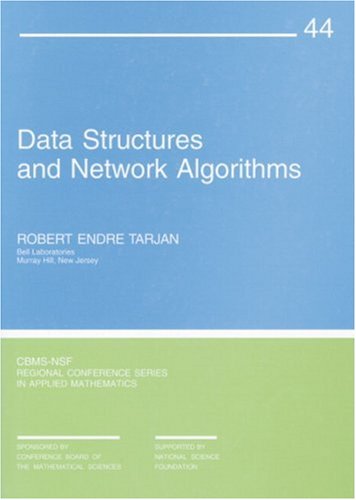Matthew Naugle0471196568, 9780471196563
Table of contents :
TCP/IP Illustrated Book……Page 0
Table of Contents……Page 1
Illustrated TCP/IP:Acknowledgments……Page 11
Transmission Control Protocol/Internet Protocol……Page 13
TCP/IP and Other Protocols……Page 17
The Origins of TCP/IP……Page 20
The World Wide Web……Page 26
Internet, Intranets, and Extranets……Page 30
Who Governs the Internet?……Page 32
The Governing Bodies of the Internet……Page 34
An Overall View of the Internet……Page 36
Internet Timeline……Page 37
Circuit and Packet Switching……Page 38
TCP/IP Protocol Documents……Page 40
Why Study the RFCs?……Page 42
Submitting an RFC……Page 44
RFC Updates……Page 46
RFC Format……Page 47
Other RFC Format Requirements……Page 49
Requirements in RFCs……Page 51
TCP/IP: The Protocols (covered in this book) and the OSI……Page 53
The Protocol Suite, According to This Book Model……Page 54
IP Overview……Page 56
IGPs, EGPs, and Routing Protocols……Page 58
Introduction to Routing Protocols (RIP)……Page 60
Introduction to Routing Protocols (OSPF)……Page 62
Other IP-Related Protocols……Page 64
Introduction to Transport Layer Protocols……Page 66
Introduction to the TCP/IP Standard Applications……Page 68
The Internet Protocol (IP)……Page 70
Connectionless, Best-Effort Delivery Service……Page 71
Data Encapsulation by Layer……Page 73
IPv4 Header……Page 75
Header Length, Service Type, and Total Length Fields……Page 77
Fragmentation……Page 79
Time to Live (TTL)……Page 82
Protocol and Checksum Fields……Page 84
IP Options Field……Page 85
Source and Destination Address Fields……Page 87
The IP Address Scheme……Page 89
Classful Addressing–The Original Address Scheme……Page 91
IP Address Format……Page 93
Identifying a Class……Page 95
Class A Address……Page 96
Class B Address……Page 98
Class C Address……Page 100
Class D Address……Page 102
Classes A-D Review……Page 104
Subnetting……Page 106
Reasons for Subnetting……Page 108
Subnetting Examples (Classes A, B, and C)……Page 110
More Subnet Examples……Page 112
Physical and Logical Addresses……Page 114
Subnet Mask Template……Page 115
An Example Conversion……Page 117
Let’s Try One……Page 119
Subnet Bits……Page 121
Subnet Restrictions……Page 122
Subnet Mask Decisions……Page 124
Assigning More Than One Address to an Interface……Page 126
Classful IP Address Review……Page 127
Address Restrictions……Page 129
Address Allocation (The Internet Registry)……Page 131
Address Resolution Protocol (ARP)……Page 133
ARP Packet Format……Page 135
ARP Operation……Page 136
Rules for ARP……Page 138
Reverse Address Resolution Protocol (RARP)……Page 140
Proxy ARP……Page 142
What’s Wrong with the Address?……Page 144
Extending the Life of the IPv4 Address Space……Page 146
Address Assignment (The Old Method)……Page 148
Addressing (The Old Method)……Page 150
Address Terms and Definitions……Page 151
Making the Address Efficient……Page 153
Masks and Prefixes……Page 155
Another Try……Page 157
Variable-Length Subnet Masks……Page 159
Longest Match Rule……Page 161
Example One: An ISP Address Assignment……Page 163
Example Two: Relaxing the Assignment……Page 165
Supernetting Exposed……Page 167
Route Aggregation……Page 168
Determining a Common Prefix……Page 170
Another Look at Route Aggregation……Page 172
Classless Inter-Domain Routing (CIDR)……Page 174
Classless Inter-Domain Routing (continued)……Page 176
Prefix Assignments……Page 178
A Look at the Addresses of an ISP……Page 180
A Graphic Look at the Example……Page 182
CIDR and VLSM Comparison……Page 184
Special Subnet Considerations……Page 186
Internet Assigned Numbers Authority……Page 188
Current IANA Address Block Assignments……Page 190
Routing……Page 192
Direct Routing……Page 194
Indirect Routing……Page 196
A Flowchart……Page 198
Routing Protocols-Distance Vector……Page 199
Updating Other Routers (Distance Vectors)……Page 201
A Bigger Update……Page 203
Routing Tables……Page 205
The Routing Information Protocol (Version 1)……Page 207
RIP Operational Types……Page 209
RIP Field Descriptions……Page 211
Default Router and Gateways……Page 213
Disadvantages of the RIPv1 Protocol……Page 215
Scaling with RIP……Page 217
Routers and Subnet Masks……Page 219
RIP Fixes……Page 221
Split Horizon Demonstrated……Page 223
RIP Version 2……Page 225
Authentication……Page 227
Subnet Mask Field……Page 228
Route Tag and Next-Hop Fields……Page 230
Multicast Support……Page 231
RIPv2 Compatibility with RIPv1……Page 233
Open Shortest Path First (OSPF, RFC 2178)……Page 235
An OSPF Network……Page 237
A Routing Protocol Comparison……Page 238
OSPF Overview……Page 241
OSPF Media Support……Page 243
Router Types……Page 244
Router Names and Routing Methods……Page 246
Message Types……Page 247
Metrics (Cost)……Page 249
Generic Packet Format……Page 251
The Hello Protocol……Page 252
Adjacency……Page 254
Maintaining the Database……Page 256
OSPF Areas……Page 258
The Backbone Area……Page 260
The Area Border Router (ABR)……Page 262
Virtual Link……Page 264
Inter-Area Routing……Page 265
Information from Other Autonomous Systems……Page 266
Stub Areas……Page 268
RFCs Related to OSPF……Page 269
Static versus Dynamic Routing……Page 271
Remote Networks……Page 274
Datagram Routing……Page 276
Introduction……Page 278
IPv6 Features……Page 281
From IPv4 to IPv6……Page 283
IP Version Numbers According to RFC 1700……Page 285
IPv6 Header……Page 286
IPv4 Options — A Review……Page 288
IPv4 and IPv6 Header Differences……Page 290
IPv6 Extension Headers……Page 292
Fragmentation……Page 294
IPv6 Addressing……Page 296
IPv6 Addressing Prefix……Page 300
6Bone Test Addressing……Page 302
Provider-Based IPv6 Addressing……Page 303
Local-Use IPv6 Addressing……Page 304
IPv6 Addresses with Embedded IPv4 Addresses……Page 306
Unicast Addresses……Page 308
Autoconfiguration……Page 310
Neighbor Discovery……Page 312
Neighbor Discovery Types……Page 315
Neighbor Discovery and IPv4……Page 317
Address Resolution……Page 320
Methods of Deploying IPv6……Page 322
IPv6 Tunneling Introduction……Page 324
IPv6 Tunnel Addressing……Page 326
IPv6 and IPv4 Dual-Stack Strategy……Page 328
IPv6 Tunneling……Page 329
IPv6 Tunneling……Page 330
IPv6 Tunneling Flowchart 1……Page 331
IPv6 Tunneling Flowchart 2……Page 332
IPv6 Tunneling Flowchart 3……Page 333
Anycast Addressing……Page 334
Multicasting for IPv6……Page 335
IPv6 Routing……Page 337
RIPng……Page 339
ICMP……Page 340
ICMPv6 Encapsulation……Page 342
ICMPv6 and ICMPv4……Page 343
ICMPv6 Error Messages……Page 345
ICMP Informational Messages……Page 348
ICMP and Neighbor Discovery……Page 350
ICMPv6 and Multicast……Page 352
IPv6 Cache Entries……Page 354
IPv6 Algorithm……Page 356
RFCs Related to IPv6……Page 358
Internet Control Message Protocol (ICMP)……Page 360
ICMP PING……Page 362
More ICMP Functions……Page 364
User Datagram Protocol (UDP)……Page 366
Multiplexing and Demultiplexing……Page 368
Port Numbers……Page 369
Assigned, Registered, and Dynamic Port Numbers……Page 371
Dynamic Port Numbers……Page 373
Transmission Control Protocol (TCP)……Page 375
TCP Details……Page 377
TCP Fields……Page 379
TCP Services……Page 381
TCP Connection Establishment……Page 382
The Three-Way Handshake……Page 384
TCP Segment……Page 386
Sequence Numbers and Acknowledgments……Page 388
Sequence and Acknowledgment Example……Page 390
TCP Flow and Window Management……Page 392
TCP Retransmission……Page 394
Slow Start and Congestion Avoidance……Page 396
Termination……Page 399
Real-Time Protocol and the Real-Time Control Protocol……Page 400
Translators……Page 404
Mixers……Page 405
RTP Message Format……Page 406
Support for Time-Sensitive Apps……Page 408
Payload Type……Page 410
Providing Control for RTP……Page 412
Sender Reports……Page 413
Receiver Reports……Page 415
Source Description Packet……Page 416
Bye Message (Packet)……Page 417
Application-Specific Message……Page 418
Caveats……Page 419
RFCs……Page 420
Selected TCP/IP Applications……Page 421
TELNET……Page 423
TELNET Options……Page 425
File Transfer Protocol (FTP)……Page 427
FTP Commands……Page 429
FTP Data Transfer……Page 431
Trivial File Transfer Program (TFTP)……Page 433
Domain Name Service (DNS)……Page 435
DNS Structure……Page 437
DNS Components……Page 439
Domain Structure……Page 441
Name Servers……Page 443
Query Function Types……Page 445
Example DNS Database……Page 446
SOA Record……Page 448
Name Server Records……Page 450
Address Records……Page 451
Mail Exchange Records (MX)……Page 453
Playing with the Database……Page 455
WHOIS Command……Page 457
More DNS Information……Page 459
Simple Mail Transfer Protocol (SMTP)……Page 461
SMTP Functions……Page 463
SMTP Flow……Page 465
DNS Interaction for Mail……Page 467
Post Office Protocol (POP)……Page 468
POP Operation……Page 470
SMTP, DNS, and POP Topology……Page 472
Introduction……Page 473
Multicast Components……Page 475
Multicast Caveats……Page 477
Unicast (versus Multicast)……Page 479
Multicast (versus Unicast)……Page 481
Multicasting Type……Page 482
Addressing Type Review……Page 484
Introduction to IP Multicast……Page 486
Extensions to the IP Service Interface……Page 488
Receiving Multicast Datagrams……Page 490
Address Format……Page 492
Mapping to an Ethernet or IEEE 802.X MAC Address……Page 494
A Converted IP Multicast Address……Page 496
Protocols……Page 497
IGMP Header……Page 499
Router Functions of IGMP……Page 501
HostJoin……Page 503
Multicast Algorithms……Page 505
Leaves, Branches, and the Root……Page 507
Spanning Tree and Flooding……Page 508
Reverse Path Forwarding (RPF)……Page 510
Pruning and Grafting (Definition)……Page 512
Reverse Path Multicasting (RPM)……Page 514
Core-Based Tree (CBT)……Page 516
Distance Vector Multicast Routing Protocol (DVMRP)……Page 518
DVMRP and IGMP……Page 520
Neighbor Discovery……Page 521
Route Reports……Page 522
Receiving a Route Report……Page 523
DVMRP Tables……Page 525
DVMRP Route Tables……Page 527
DVMRP Tunneling……Page 529
IP-in-IP Packet Format……Page 530
Protocol-Independent Multicast (PIM)……Page 531
PIM–Dense Mode (PIM-DM)……Page 533
PIM–Dense Mode Operation……Page 535
Adding Interfaces……Page 537
PIM–Sparse Mode (PIM-SM)……Page 539
Types of Multicast Trees Using PIM-SM……Page 541
Joining a Group……Page 543
A Host Sending to a Group……Page 544
Converting to a Source-Rooted Tree……Page 545
Rendezvous Points……Page 546
Comparison of Sparse- and Dense-Mode Protocols……Page 548
Multicast Open Shortest Path First (MOSPF)……Page 550
MOSPF Differences……Page 552
MOSPF Caveats……Page 554
Local-Group Database and the Group-Membership LSA……Page 555
Role of the DR and the BDR……Page 557
The Local-Group Database……Page 559
Operation……Page 561
Forwarding Cache……Page 563
Inter-Area MOSPF Routing……Page 565
Inter-Area Multicast Example……Page 567
Inter-Area Shortest-Path Tree……Page 569
Inter-Autonomous System Multicast……Page 570
Multicast Conclusion……Page 572
RFCs to Be Reviewed……Page 574
Boot Protocol (BOOTP)……Page 577
BOOTP Operation……Page 579
BOOTP Field Definitions……Page 580
Client Side (BOOTREQUEST)……Page 582
Server Side……Page 584
Chicken-or-the-Egg? Dilemma……Page 586
BOOTP Relay Agents (or BOOTP Gateway)……Page 588
Dynamic Host Configuration Protocol (DHCP)……Page 590
DHCP……Page 592
IP Address Allocation……Page 594
DHCP Messages……Page 595
DHCP Operation……Page 597
DHCP Responses……Page 599
Releasing an IP Address……Page 601
DHCP Shortcuts……Page 602
Lease Duration……Page 604
Efficiencies……Page 606
Operational Tables……Page 608
RFCs to Be Reviewed……Page 611
Resource Reservation Protocol (RSVP)……Page 612
Alternatives……Page 614
Where It Will Be Used……Page 616
Operation……Page 618
Path Messages……Page 620
RSVP and Routers……Page 622
RSVP Requests……Page 624
Reservation Style……Page 626
RSVP Control……Page 628
Disabling a Reservation……Page 630
Handling Errors……Page 631
Merging Flowspecs……Page 632
A Simple Example……Page 634
Issues……Page 636
RSVP Summary……Page 638
Conclusion……Page 640
Simple Network Management Protocol (SNMP)……Page 642
SNMP Elements……Page 643
SNMP Manager……Page 644
Agent……Page 646
Management Information Base (MIB)……Page 648
Example MIB Entry……Page 650
The Protocol of SNMP……Page 652
SNMP Encapsulation……Page 654
Index……Page 655







Reviews
There are no reviews yet.